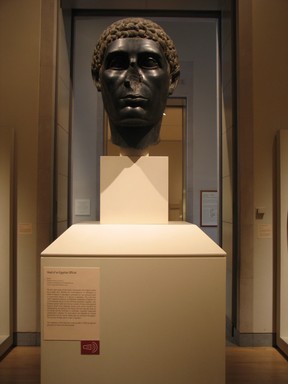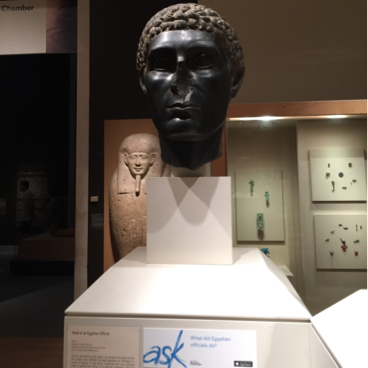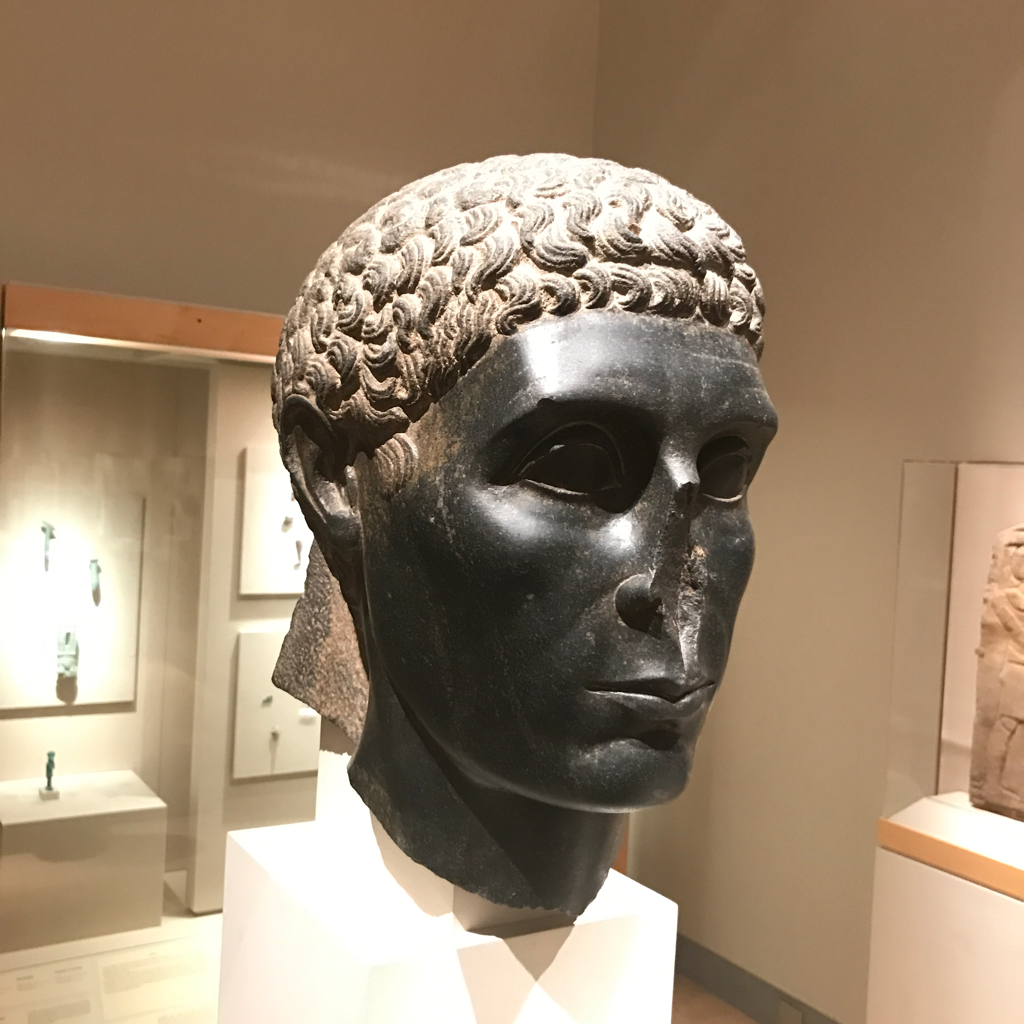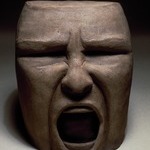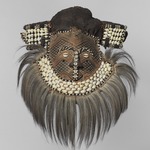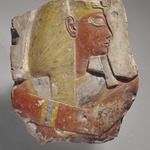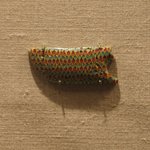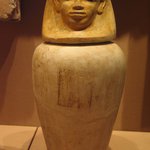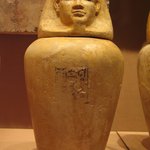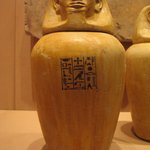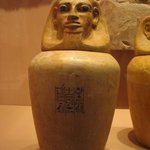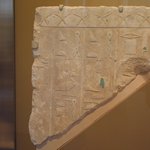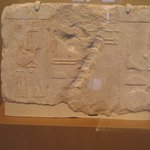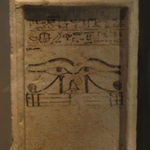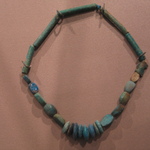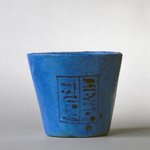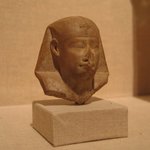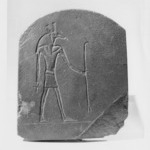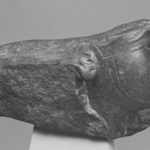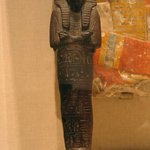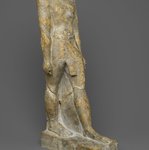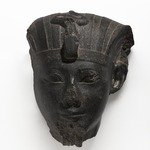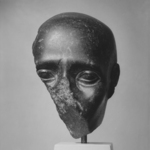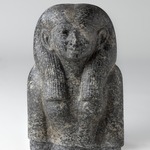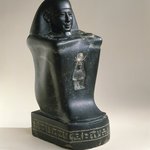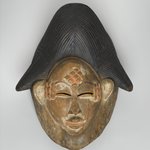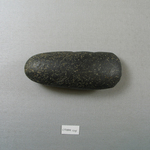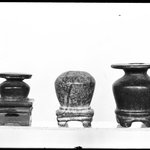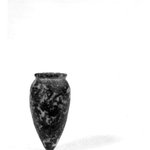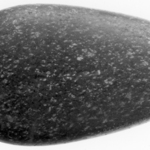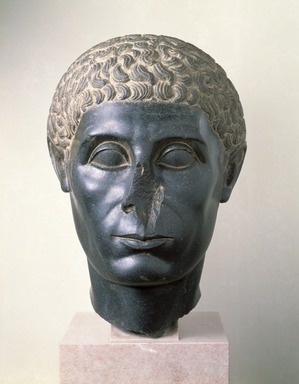
Head of an Egyptian Official
Egyptian, Classical, Ancient Near Eastern Art
On View: 19th Dynasty to Roman Period, Martha A. and Robert S. Rubin Gallery, 3rd Floor
During the Ptolemaic Period (332–30 B.C.), when Egypt was ruled by a family of Greek descent named Ptolemy, large numbers of Greeks moved to Egypt, where many served as government officials. We cannot know, therefore, whether this striking head, from an over-life-size statue, represented a Greek or a native Egyptian, especially since its striking features are a blend of Egyptian and Greek styles. The short curls, for example, are a simplified rendering of a Greek hairdo, and the large, deep-set eyes derive from images of Alexander the Great. But the facial modeling, with its folds and furrows, has many precedents in Egyptian art, as does the narrow, sharply outlined mouth. We may see here the beginning of a mixed Greco-Egyptian style, which was soon to disappear when the Romans conquered Egypt.
MEDIUM
Diorite
DATES
ca. 50 B.C.E.
PERIOD
Ptolemaic Period
DIMENSIONS
16 5/16 x 11 1/4 x 13 7/8 in. (41.4 x 28.5 x 35.2 cm) (show scale)



COLLECTIONS
Egyptian, Classical, Ancient Near Eastern Art
ACCESSION NUMBER
58.30
CREDIT LINE
Charles Edwin Wilbour Fund
PROVENANCE
Mitrahina, Egypt; circa 1944, reportedly purchased in Cairo, Egypt by Albert Eid of Cairo and New York, NY; by January 11, 1947, acquired by Albert Eid; circa 1950, consigned by the Albert Eid estate to Emile Mansoor of New York, NY; before 1958, purchased from Albert Eid estate by Leonard Epstein of New York, NY; by 1958, purchased from Leonard Epstein by Michel Abemayor of New York, NY; 1958, purchased from Michel Abemayor by the Brooklyn Museum.
Provenance FAQ
CATALOGUE DESCRIPTION
Over life-size diorite (black) head of a man broken from standing statute. Individual face with deep upper eyelids, thin lips, square chin and shallow furrows running from nose. Hair arranged in curls with strands hanging down in front of each ear. Flesh areas polished, hair mat. Rear pillar (mat) with pyramidal top and beginning of a scene of deities.
Condition: Major part of nose lost, break extends into upper lip. Otherwise intact. Preserved to base of neck.
EXHIBITIONS
MUSEUM LOCATION
This item is on view on the 19th Dynasty to Roman Period, Martha A. and Robert S. Rubin Gallery, 3rd Floor
CAPTION
Head of an Egyptian Official, ca. 50 B.C.E. Diorite, 16 5/16 x 11 1/4 x 13 7/8 in. (41.4 x 28.5 x 35.2 cm). Brooklyn Museum, Charles Edwin Wilbour Fund, 58.30. Creative Commons-BY (Photo: Brooklyn Museum, 58.30_SL1.jpg)
IMAGE
front, 58.30_SL1.jpg. Brooklyn Museum photograph
"CUR" at the beginning of an image file name means that the image was created by a curatorial staff member. These study images may be digital point-and-shoot photographs, when we don\'t yet have high-quality studio photography, or they may be scans of older negatives, slides, or photographic prints, providing historical documentation of the object.
RIGHTS STATEMENT
Creative Commons-BY
You may download and use Brooklyn Museum images of this three-dimensional work in accordance with a Creative Commons license. Fair use, as understood under the United States Copyright Act, may also apply.
Please include caption information from this page and credit the Brooklyn Museum. If you need a high resolution file, please fill out our online application form (charges apply).
For further information about copyright, we recommend resources at the United States Library of Congress, Cornell University, Copyright and Cultural Institutions: Guidelines for U.S. Libraries, Archives, and Museums, and Copyright Watch.
For more information about the Museum's rights project, including how rights types are assigned, please see our blog posts on copyright.
If you have any information regarding this work and rights to it, please contact copyright@brooklynmuseum.org.
RECORD COMPLETENESS
Not every record you will find here is complete. More information is available for some works than for others, and some entries have been updated more recently. Records are frequently reviewed and revised, and we welcome any additional information you might have.
